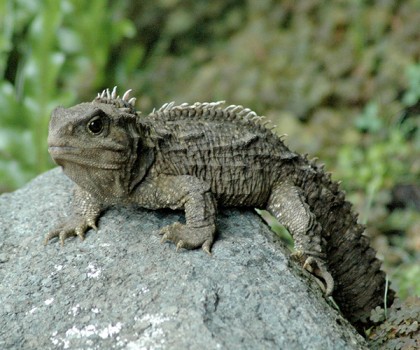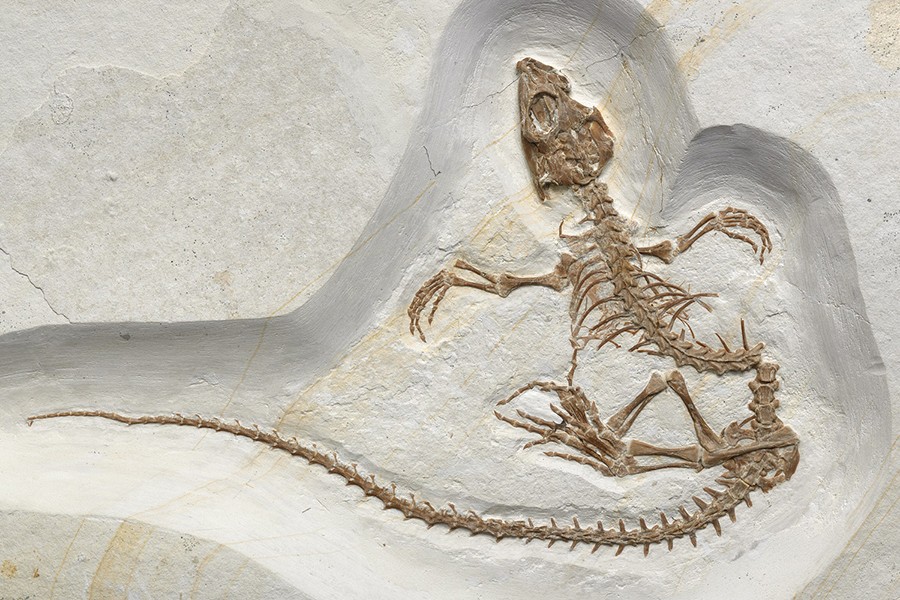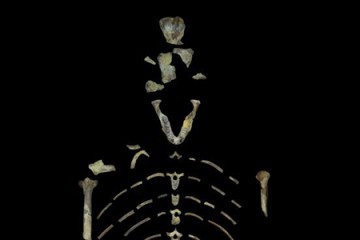A 155-million-year-old reptile fossil is helping scientists fill in the blanks on the evolution of certain land-dwellers into sea creatures.
Researchers believe the foot-long reptile, Vadasaurus herzogi, is an early cousin of the pleurosaur, an eel-like marine creature of the Jurassic period. The new study also links both the swimmers to a modern reptile in New Zealand.
The Vadasaurus fossil was discovered in limestone quarries near Solnhofen, Germany, once part of a shallow sea. The well-preserved specimen is now housed in the American Museum of Natural History in New York, where the job of unlocking its evolutionary secrets fell to museum research associate Gabriel Bever, who is also an assistant professor of functional anatomy and evolution at the Johns Hopkins University School of Medicine, and Mark Norell, the museum's paleontology chair.
A full report on their discoveries was published recently in Royal Society Open Science.

Image caption: The tuatara is the closest living relative to Vadasaurus
Image credit: Wikimedia Commons
The Vadasaurus (Latin for "wading lizard") may have swum like a modern sea snake, undulating its spinal column. The reptile combined aquatic features—a triangular head with an elongated snout to ensnare fish, and a long, whip-like tail—with the larger limbs typical of a land-dweller. Bever speculates the reptile didn't use its limbs for propulsion in water, but to steer.
The researchers confirmed family ties between Vadasaurus and the eel-like pleurosaur, which lived 150 to 185 million years ago. To date, fossils of only three ancient species of pleurosaurs have been discovered.
Both of the sea-dwelling cousins are part of a larger lineage of reptiles called Rhynchocephalia—which connects closely with the tuatara, a lizard-like reptile that lives today on land in New Zealand's coastal islands. The tuatara is the single remaining species of rhynchocephalian still left on Earth.
Some 155 million years ago, Vadasaurus' tail had begun to lengthen like most modern sea animals, says Bever, but not to the size of the 5-foot pleurosaur.
"We don't know exactly how much time Vadasaurus was spending on land versus in the water," Bever says, noting the need for more fossil finds. "It may be that the animal developed its aquatic adaptations for some other reason, and that these changes just happened to be advantageous for life in the water."
Read more from Hopkins MedicinePosted in Science+Technology
Tagged paleontology, fossils, evolution, reptiles










